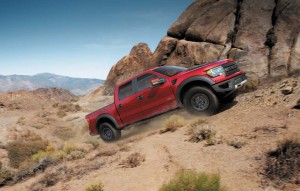For Ford and Toyota it’s splitsville.
The two automakers have completed their feasibility study for collaboration on the development of a new hybrid system for light trucks and SUVs. The study was launched in August 2011.
“As a result, Ford and Toyota have agreed to develop hybrid systems individually,” Toyota said in a statement.
“After successfully completing the feasibility and development of the hybrid system project with Toyota, Ford is moving forward on its own with development of a rear-wheel-drive hybrid system for Ford pickups and SUVs,” Ford said in a separate statement.
Toyota and Ford continue to evaluate the feasibility of working together on next-generation standards for telematics and will consider other areas for future collaboration as well.
According to the Japanese automaker, it has sold more than 2 million Toyota and Lexus hybrid vehicles in the U.S., representing 70% of the U.S. auto industry’s total hybrid sales, and more than 5 million hybrids worldwide. In addition, Toyota remains on track to offer 18 new or redesigned hybrid models globally by the end of 2015.
Meanwhile, Ford reported it set a record for hybrid sales in the second quarter of 2013, with sales of 24,217 vehicles – up 517% compared with last year and up 15% over the first quarter of 2013 – as demand grows in markets across the United States and as more Toyota and Honda customers trade in their vehicles for a Ford.
Fueling the growth is the increasing demand for Ford C-MAX and Ford Fusion hybrid vehicles in California and other new hybrid markets. For example, demand increased more than 1,000% in New York. Chicago saw an 840% gain, while hybrid sales rose almost 730% in Seattle and close to 500% in Washington, D.C., Ford reported.
“Customers have come to expect fuel economy and leading technology with every new vehicle Ford delivers,” said Jim Farley, executive vice president, global marketing, sales and service and Lincoln. “Our newest hybrids are contributing to Ford’s growth and share gains, while bringing new customers into the showroom in nontraditional hybrid markets.”
Raj Nair, Ford group vice president, global product development, said the company’s new hybrid system – which will be available by the end of this decade – will be based on an all-new architecture to deliver the capability truck and SUV customers demand while providing greater fuel economy.
“We know what it takes to build world-class hybrids, and we now will build and leverage that expertise in-house,” Nair said. “By continuing to develop a rear-wheel-drive hybrid system on our own, we can extend our advanced hybrid technologies to new vehicle segments and deliver even better fuel economy across our lineup,” he said
To meet the increasing demand for hybrids, Ford is hiring more than 200 new electrification engineers and expanding its research facilities to speed development of hybrid and electrified vehicles.
Ford also continues to bring in-house more of the development of its most advanced vehicles. This includes the design and engineering of transmissions, batteries and control systems, along with work on the rear-wheel-drive hybrid system.
(With sales slipping, Toyota cuts price of Camry sedan. Click Here for more.)
Ford’s continued accelerated work in hybrids is a key component of the company’s Blueprint for Sustainability and plays an important role in delivering leading fuel economy.
Within the last year, Ford has invested more than $355 million to design, engineer and manufacture key components for its electrified vehicle lineup.
(Click Here to read about Ford’s plans to hire more white collar workers.)
An additional $50 million investment in research and development facilities will double Ford’s electrification battery-testing capabilities, helping to speed electrified vehicle development by as much as 25%.

